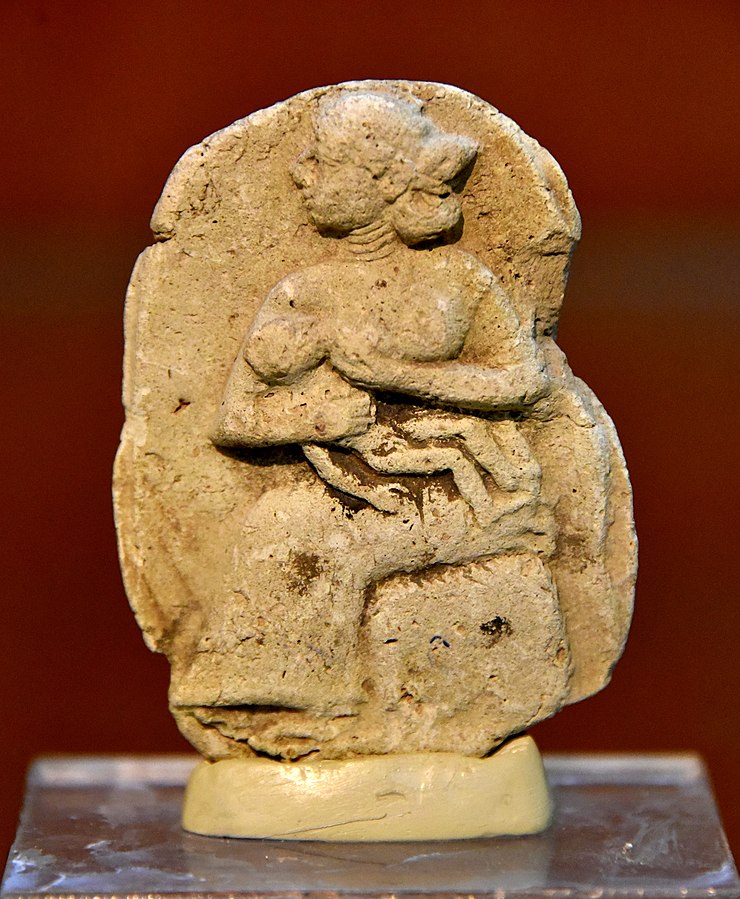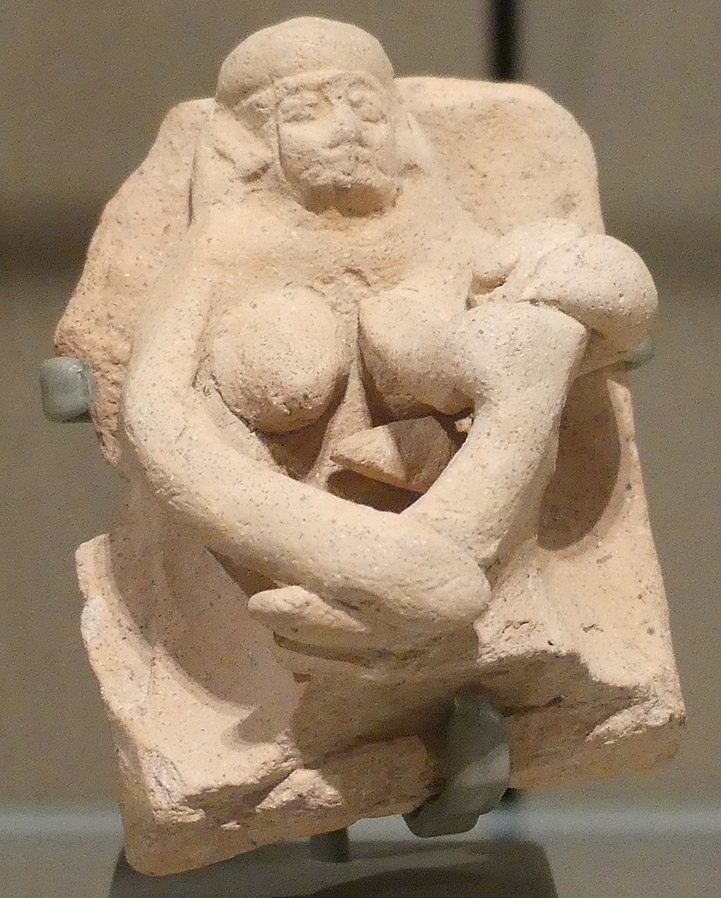The length of the period of breastfeeding depends on many factors, both individual and cultural or environmental ones. In human societies that have no access to easily digested food alternatives (this refers to foragers in particular) this period is usually longer, while in farming communities, where infants are fed with porridge or yoghurt, it can be shortened. This implies demographic consequences: a mother who breastfeeds her child for a shorter time can have more children, therefore, the breastfeeding period influences the birth rate.

© Osama Shukir Muhammed Amin FRCP(Glasg)
published under CC BY-SA 4.0, via Wikimedia Commons
Sparse historical sources
Breastfeeding was sometimes represented in ancient human populations, especially in the context of the mother-goddess, but we rarely come across sources that would help to estimate its average length. In addition to that, these sources usually present traditional recommendations rather than actual state of affairs. For instance, the Bible indicates three years as the length of this period, while the Babylonian Talmud recommends only two years. The famous Persian physician Avicenna also recommended that the first solid food should be introduced when the first teeth start to erupt, and the weaning should take place when the child begins the third year of life.
Contracts between parents and wet nurses from the first half of the 2nd millennium BC shed some light on this aspect of breastfeeding – the contracts were usually made for 3 years, and very seldom for a shorter time. However, the practice of hiring wet nurses was probably common mainly among relatively rich people. For this reason, the average length of breastfeeding is still not certain.
Isotope methods
Nevertheless, biochemical analyses of human bones found at archaeological sites, especially of stable nitrogen and oxygen isotope proportions, can produce valuable data. Since heavier isotopes of these elements tend to remain in the organism in slightly greater amounts than the lighter isotopes (this process is called isotope fractionation), the proportion of the heavier isotopes is higher in the mother’s milk than in her food.

© RomanDeckert
published under CC BY-SA 4.0, via Wikimedia Commons
This means that if a child is fed solely with mother’s milk, the proportion of the heavier nitrogen isotope (mass number 15) is obviously higher in the child’s tissues than in the mother’s tissues, and then, after the child begins to consume solid food, it gradually goes down to the same level. Therefore, if we can analyse bones of children who died at different ages (which is not very difficult due to high mortality rates in ancient societies), we can establish an average age when the proportion of the heavier nitrogen isotope starts to decrease (introduction of solid food) and reaches an average level characteristic of a given population (weaning completed).
High birth rates among farmers
Such analyses were conducted for three regions of the Bronze Age Near East (3rd and 2nd millennium BCE): the drainage basin of the Khabur River and the valley of the middle Euphrates River in northern Mesopotamia, as well as the east coast of the Mediterranean Sea. It turned out that the first solid food was introduced very early in all these regions: in the fifth month of infancy in Mesopotamia and in the eighth month in Levant on average. The age of weaning is roughly comparable with the one indicated in written sources: nearly three years in Levant and the valley of the middle Euphrates River, as well as slightly younger than two and a half years in the drainage basin of the Khabur River.
The age of introduction of solid food is earlier than the worldwide average (slightly more than a year), which means that farming populations in the Near East, with easy access to food alternatives, could afford to shorten the breastfeeding period. This, in turn, could result in higher birth rates, desirable in communities with economy depending on regular supply of labour.
The results of the research on the length of breastfeeding in the ancient Near East were published last year in the American Journal of Physical Anthropology in the article Reconstructing breastfeeding and weaning practices in the Bronze Age Near East using stable nitrogen isotopes
This article may be freely reprinted without photographs, with reference to the source
Author: Arkadiusz Sołtysiak
Translation: Barbara Majchrzak
